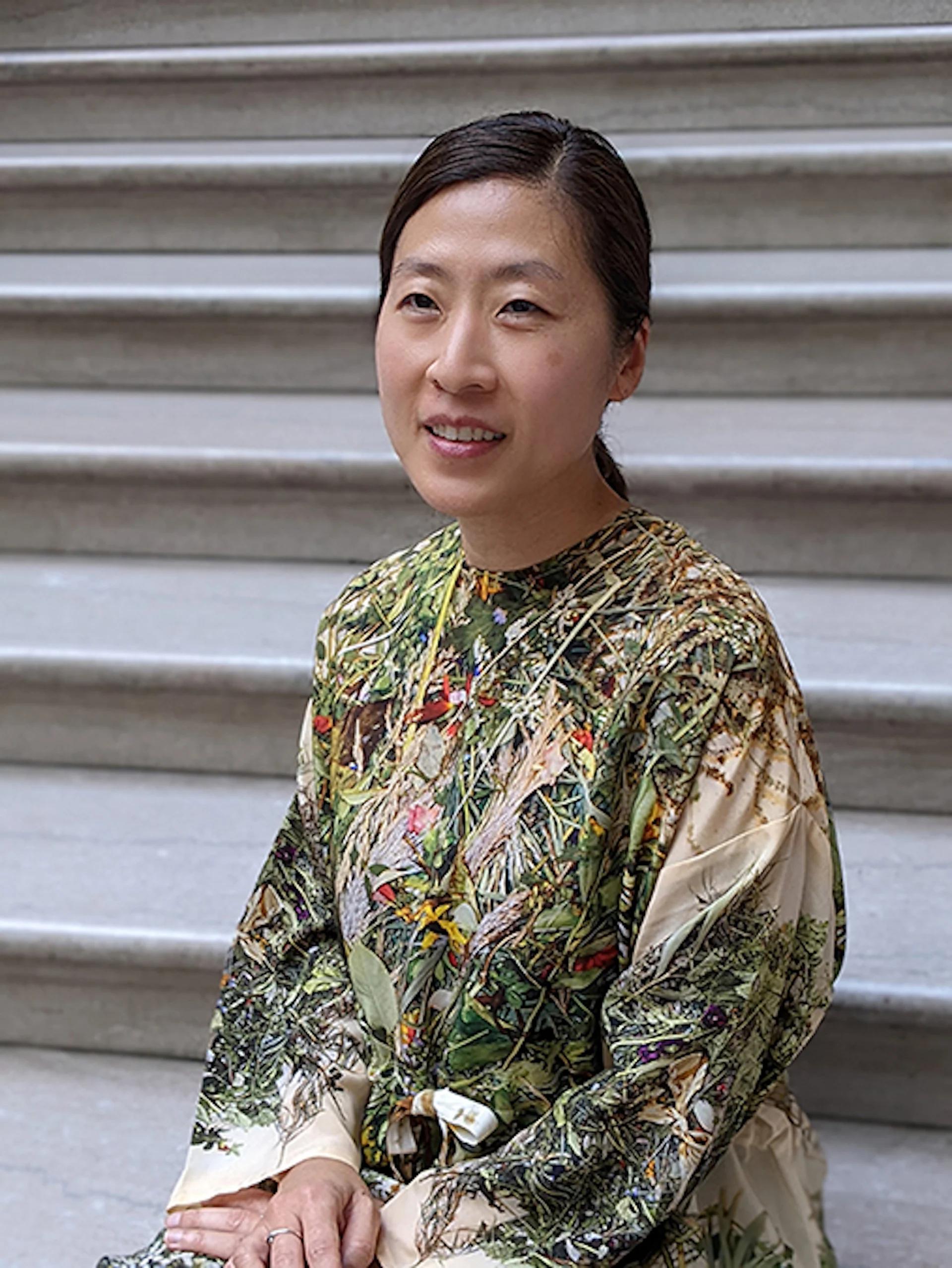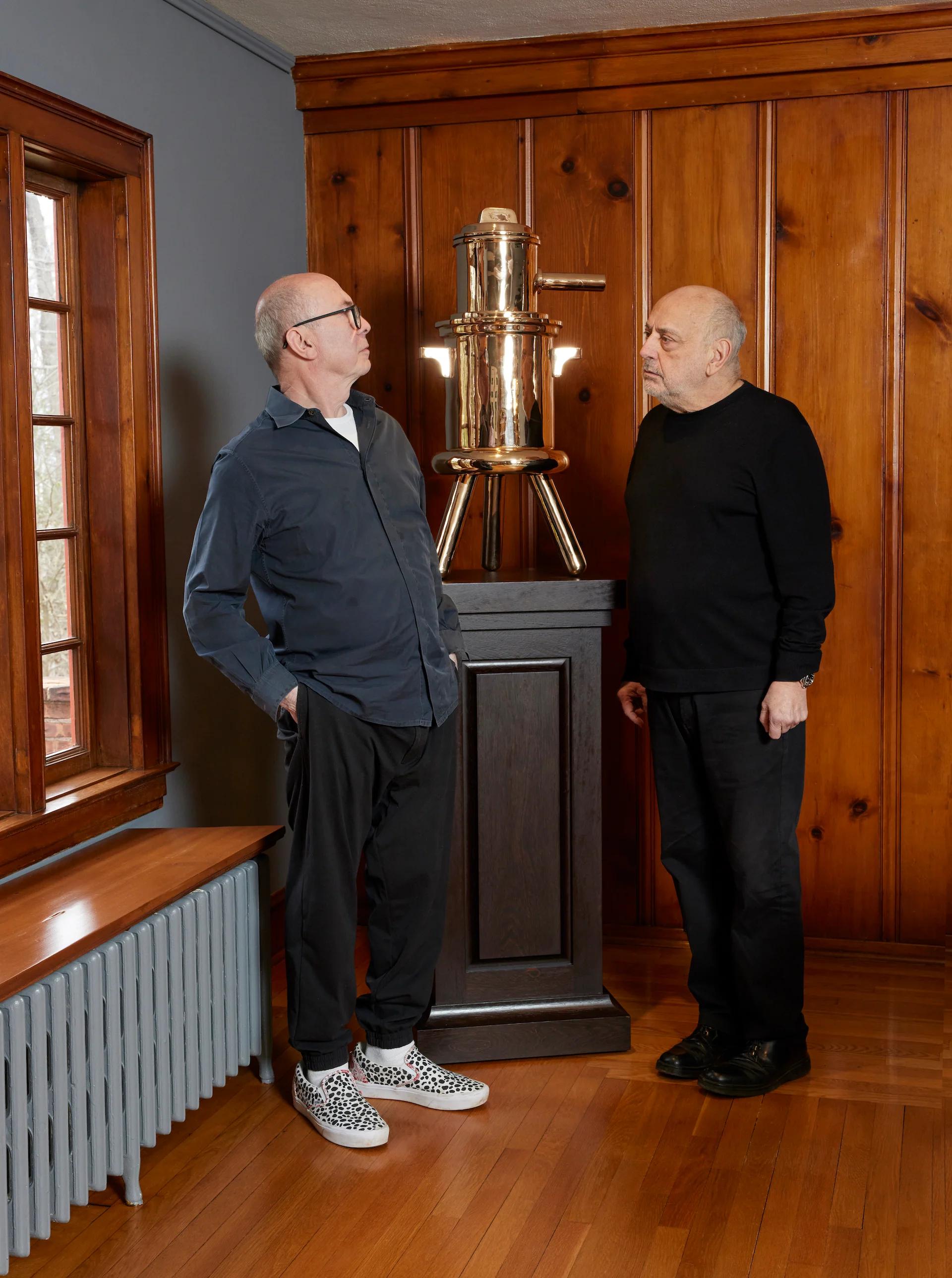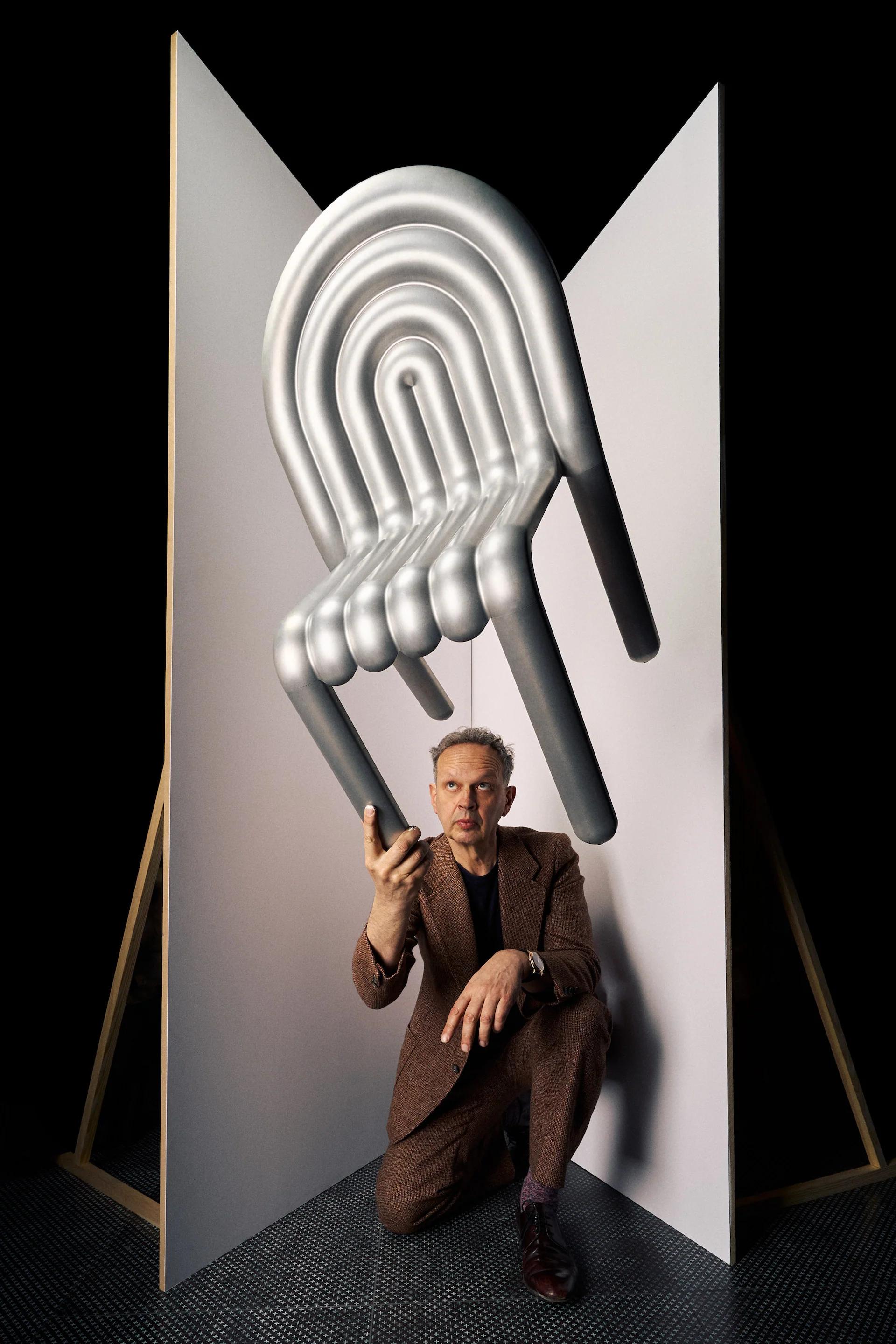VETTED AUGUST 5 2022
by Design Miami
Design Miami’s newest Vetting Committee member offers powerful expertise to aspiring and veteran design collectors
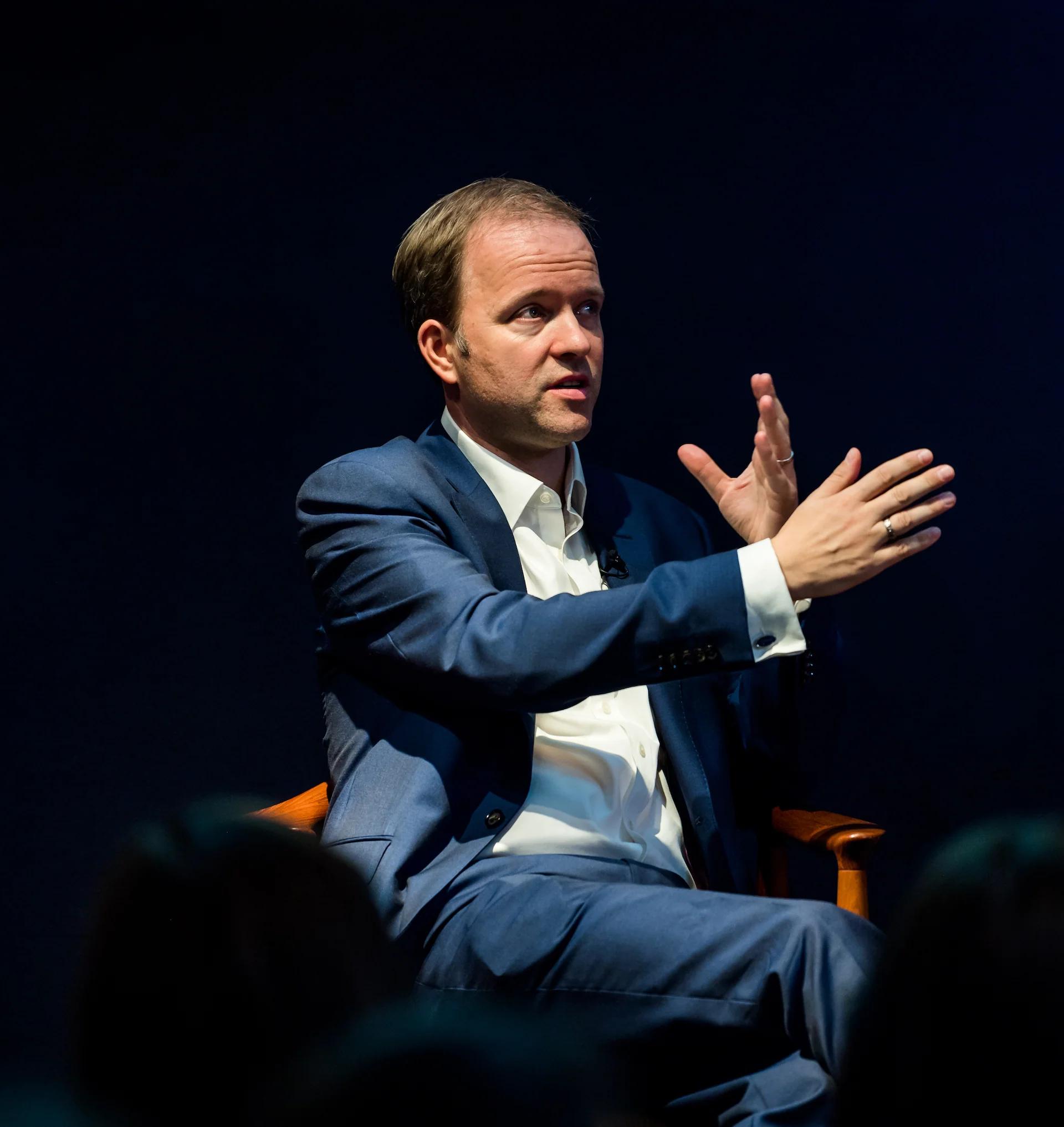
JEREMY MORRISON SHARING HIS DESIGN EXPERTISE IN A PUBLIC FORUM
Photo © Jeremy Morrison
Jeremy Morrison has been surrounded by vintage treasures his whole life. Beginning with his upbringing in his father’s antiques shop and onward through decades of work at the major auction houses, this London-based design specialist has amassed an astounding catalogue of knowledge and connections. This is his superpower, which he deploys on demand to identify, authenticate, and elucidate collection-worthy objects created over the last 150 years of design history, from the iconic to the unique. Between the expertise he has built up through his experiences at the worlds two biggest auction houses, his sizeable private library of books and archival materials, and his global network of contacts within the global design market, he is a powerful resource for clients seeking to build and sell their collections strategically.
Just under two years ago, Morrison left his position as International Director of Design at Christie’s to set up his own agency Morrison Modern Advisory—billed on his website as The Specialist Art Advisory for Design—and already he is inundated with requests from major private collectors and institutions alike. Lucky for us, he’s made time to join Design Miami’s Vetting Committee as its newest member. In the brief lull after the summer auctions and fairs and before the fall culture season kicks off, we caught up with him to learn more about his path to proficiency, the areas of his repertoire he plans to expand, and his evergreen tips for aspiring collectors.
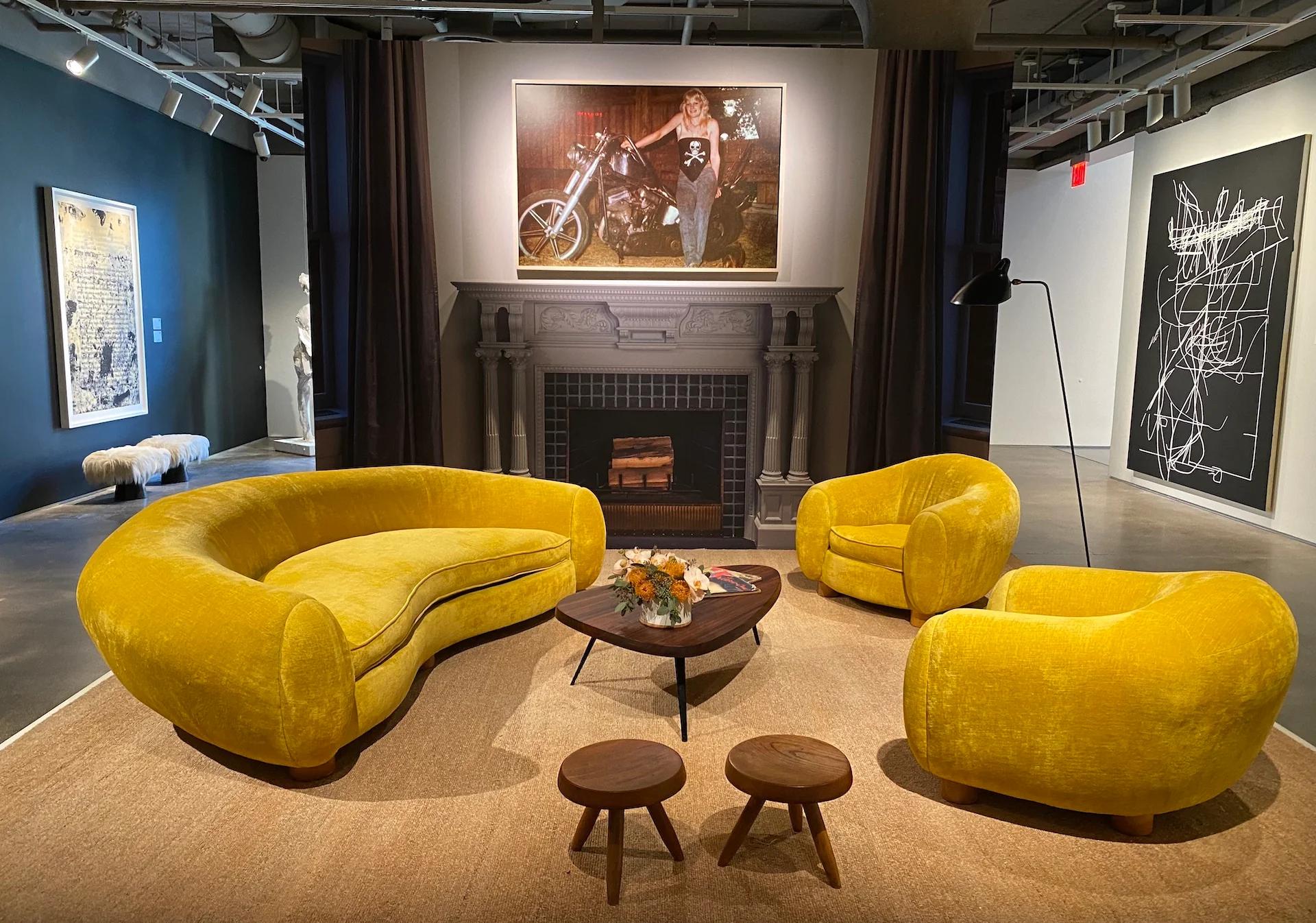
ONE OF MORRISON'S SNAPSHOTS FROM LAST DECEMBER'S DESIGN AUCTION AT SOTHEBY'S NEW YORK
Photo @MorrisonModern
Design Miami/What’s currently keeping you busy?
Jeremy Morrison/May and June were very busy with travel between London, Paris, New York, and Basel, advising and assisting clients with potential acquisitions from the main summer Design auctions and fairs. As an independent advisor, I am able to help clients who are looking at works across all of the major international auctions, fairs, and galleries, advising them on what to buy, what to avoid, and pointing out pieces or details they may have missed. With those events over I now have more time for longer term projects, such as helping clients evaluate what is in their homes and existing collections.
Some require a confidential evaluation to identify pieces that are no longer needed in their collections or that are simply gathering dust in storage. I am assessing several important objects at present for which I may either negotiate their private sale later this year to clients and contacts I am in touch with or place them in major international auctions. Each work always has its own optimum strategy for maximising the return when a decision has been made to sell. Navigating this process for clients, creating the best strategy and overseeing the sale of a work is something I have always enjoyed.
I am also researching pieces in collectors’ homes that will never be sold. In addition to being useful for inventory purposes (and identifying condition or authenticity issues), this kind of analysis also reveals hidden details that increase the owners’ enjoyment of their collections.
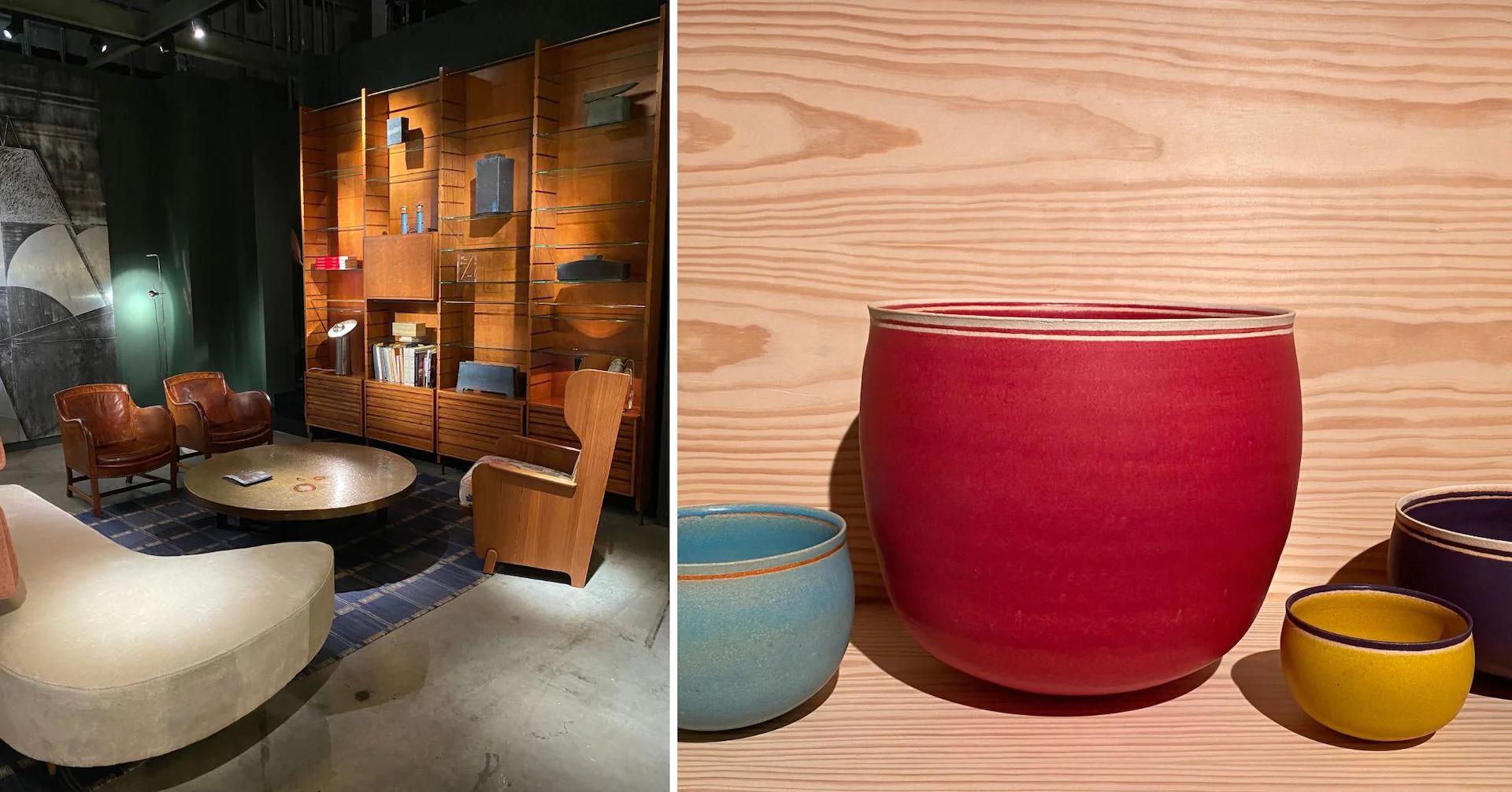
A FEW OF MORRISON'S SNAPSHOTS FROM DESIGN MIAMI/ BASEL 2022, WHERE HE SERVED A SECOND YEAR ON THE VETTING COMMITTEE
Photo @MorrisonModern
DM/How and when did you become interested in collectible objects?
JM/My father was a traditional antiques dealer in England, with a large shop and warehouse on a High Street, of the type which are now sadly near extinct. I grew up surrounded by an ever-changing array of furniture, metalwork, ceramics, garden statuary, and much more, and this gave me a strong commercial eye when handling objects. From this broad platform came my own love of British design from Pugin onwards, especially works from the Arts and Crafts and Aesthetic movements, as well as the more muscular Reformed Gothic designers.
I joined Sotheby’s in 1997, and my interests evolved further from there to encompass the whole of the 20th and 21st centuries, from the masters of Art Nouveau and Art Deco, which dominated the market when I began my career, to the heights of Royère, Lalanne, and Giacometti, which command headlines today.
DM/What’s the most important thing you’ve done to hone your expertise?
JM/I feel incredibly fortunate to have spent time as a Cataloguer at Sotheby’s in the 1990s, when the big auction houses were still handling a colossal amount of lots. We had a 300-lot furniture and art auction every two or three weeks. Four years of that—seeing the good, the bad, and the dubious—gives you the perfect grounding to be able to distinguish between what is great and, crucially, what isn't. As my career developed I soon focused on Design, becoming the Head of the Design department at Sothebys in London in 2001. there are not many experiences that hone your skills and expertise more than being responsible for sourcing, authenticating, and selling works in major international design auctions!
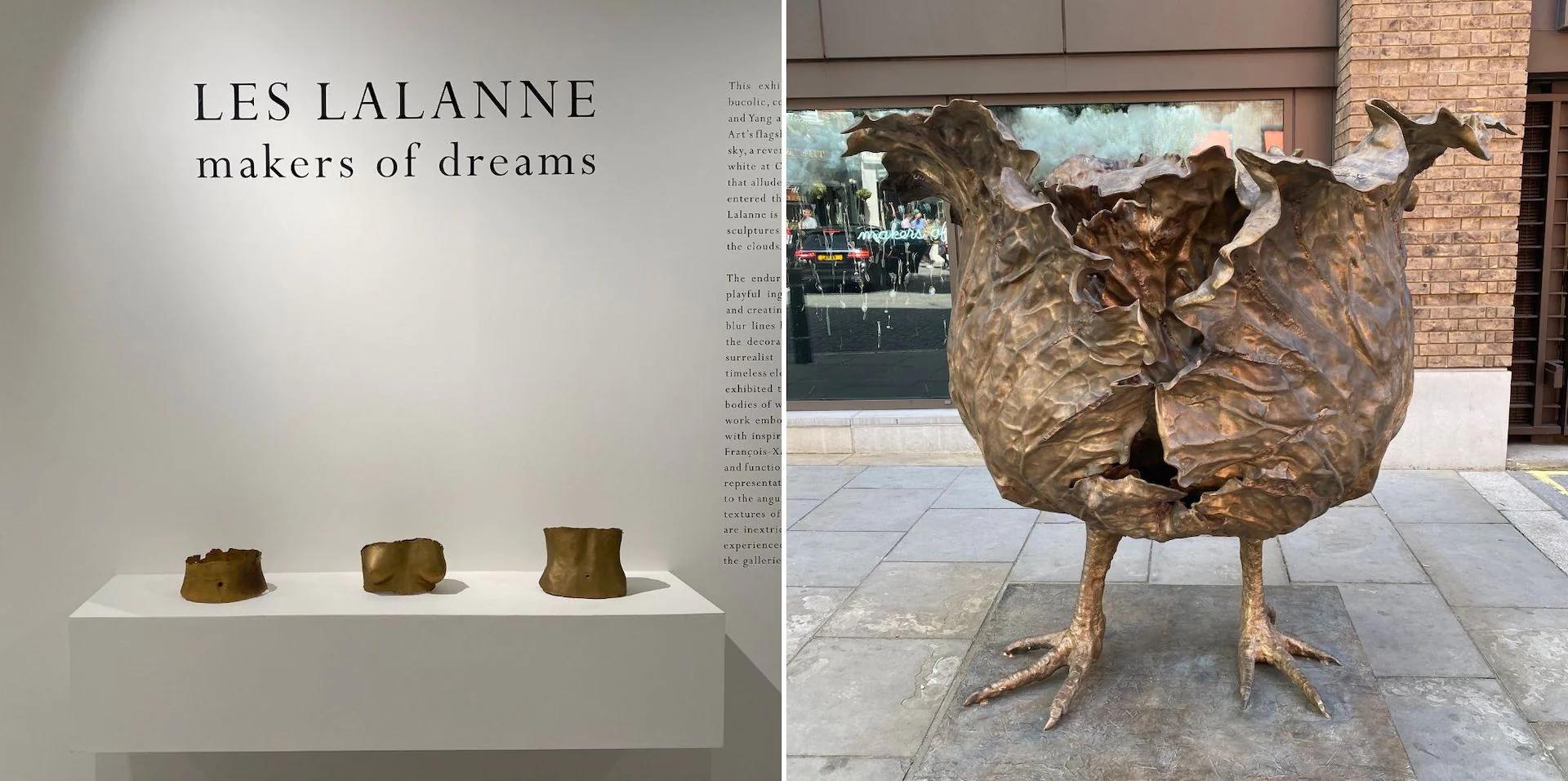
SNAPSHOTS FROM MORRISON'S VISIT TO BEN BROWN FINE ARTS' LES LALANNE SHOW IN JUNE
Photo @MorrisonModern
DM/What’s your favorite design object that you live with everyday?
JM/Given my career and role today, handling some of the greatest works of design of the last 150 years, I am lucky that I have never felt an overwhelming need to acquire the works that I come across. My passion has always been broad, covering the spectrum rather than focusing on specific eras or designers. Perhaps I'm unusual as a Design Specialist, but I don’t live in a purely 20th or 21st-century home. I have both and happily mix and match with earlier periods.
That being said, I am sitting next to a rare eight-leg table by E.W. Godwin, which is covered in the design books I am using to research my current projects. I hope he would approve.
DM/Name an elusive object that you dream about owning?
JM/My office is overflowing with my design books and archive, so space is always at a premium. But I have room for a decent clock. So it would be a clock by the contemporary Dutch designer Maarten Baas, which I have always liked, or one of the sublimely pure clocks designed by Adolf Loos in the early 20th century. I have just the spot for one of his longcases…
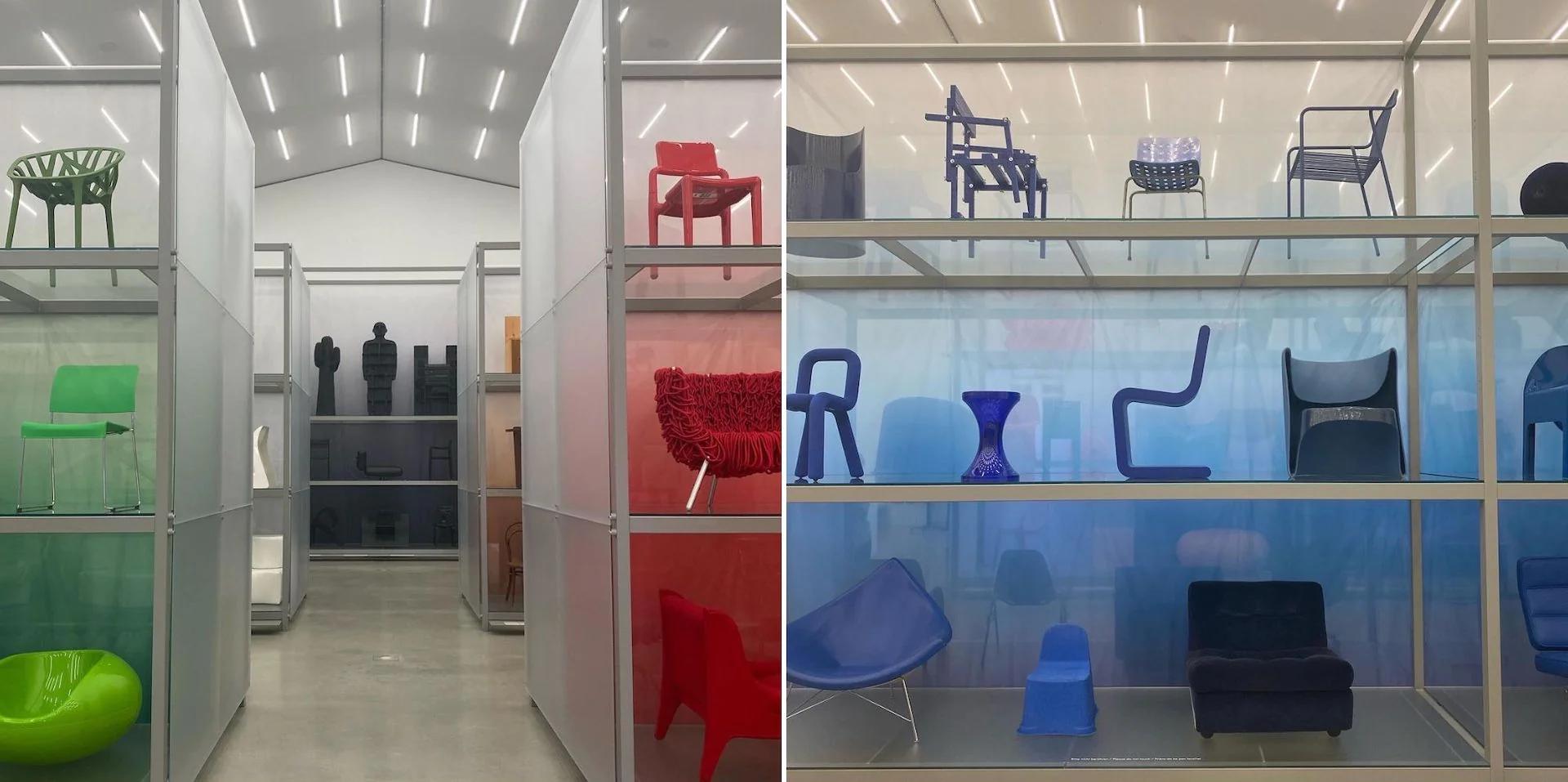
SNAPSHOTS FROM MORRISON'S VISIT TO VITRA DESIGN MUSEUM'S LATEST COLLECTION INSTALLATION, CURATED BY DESIGNER SABINE MARCELIS
Photo @MorrisonModern
DM/Which area do you wish you knew more about?
JM/It would have to be understanding more about the future role of technology in art and design collecting. The market has changed enormously in the last five years, and it's inconceivable that the generation born in the last decade won’t take part in a complete overhaul of the acquisition process in an increasingly digital future. I am fascinated by how people will interact with art and design as part of their daily lives in the years to come.
DM/If you were new to collecting design, where would you start?
JM/Time and again, the answer that I see given to this question is something along the lines of “buy what you like” and nothing else. I have always thought this to be simplistic nonsense and, frankly, potentially dangerous.
For me, any acquisition at a serious level has to use the head as well as the heart. You should immerse yourself within the wider design ecosystem. Read the books; visit the fairs and auction views; see the museums; go to the openings; and speak to artists, designers, specialists, and other collectors. Then you can make your own subjective AND objective judgements on the intrinsic and artistic value of works that appeal to you.
In the end, you cannot be taught to become a great collector, just as there is no course to teach you to become a great expert. The passion and focus for collecting should come from your own personal conviction built within a supporting framework of awareness, both of which take time to foster and mature.
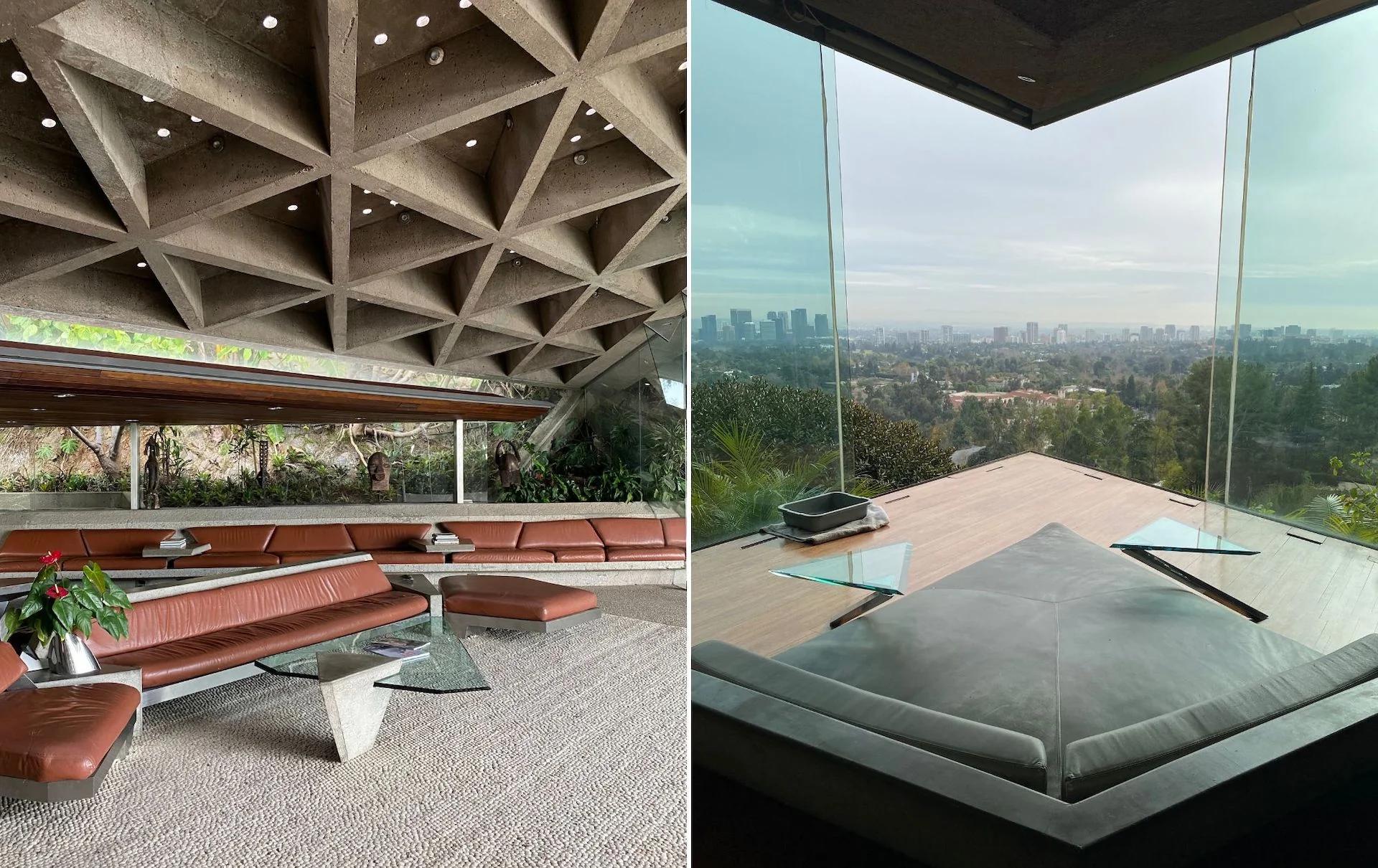
MORRISON'S SNAPSHOTS OF HIS PRIVATE TOUR OF THE SHEATS-GOLDSTEIN HOUSE BY JOHN LAUTNER IN LOS ANGELES
Photo @MorrisonModern
DM/If you could visit any artist or designer (historic or contemporary) in their studio, who would you choose and why?
JM/Josef Hoffmann at the Wiener Werkstätte in Vienna in early 1904. It was a time of optimism, when the historic atelier had just moved to larger premises on Neustiftgasse, with a future full of possibilities. This was before the financial difficulties at the Wiener Werkstatte that led to Koloman Moser leaving in 1909 and the bankruptcy of fellow co-founder Fritz Waerndorfer.
This must have been the height of Hoffmann’s confidence, with Gustav Klimt popping by and commissions for the great projects under discussion. I would love to soak up the atmosphere and witness the creation of some of the world’s most visionary interiors and objects, designs that remain so important and influential to this day.
DM/As an advisor, is there any initial advice you share with your clients?
JM/1. Don’t be led only by the name and the huge sums that a designer’s masterworks can earn - even the greatest designers had off days.
2. Always remember that each and every model by a designer has to be considered on its own merits and against its own market trajectory.
3. Just because it is rare does not mean it is valuable.
Once these potential pitfalls are avoided, you can then take advantage of the opportunities that appear. Whilst I can tell a client what I like and share my personal opinion, I am very careful to not lead them in their choices. I try to act more as their private counsel, using my experience to guide them towards works that represent an opportunity or a well considered choice—as well as away from works that don't stand up to close examination or research.
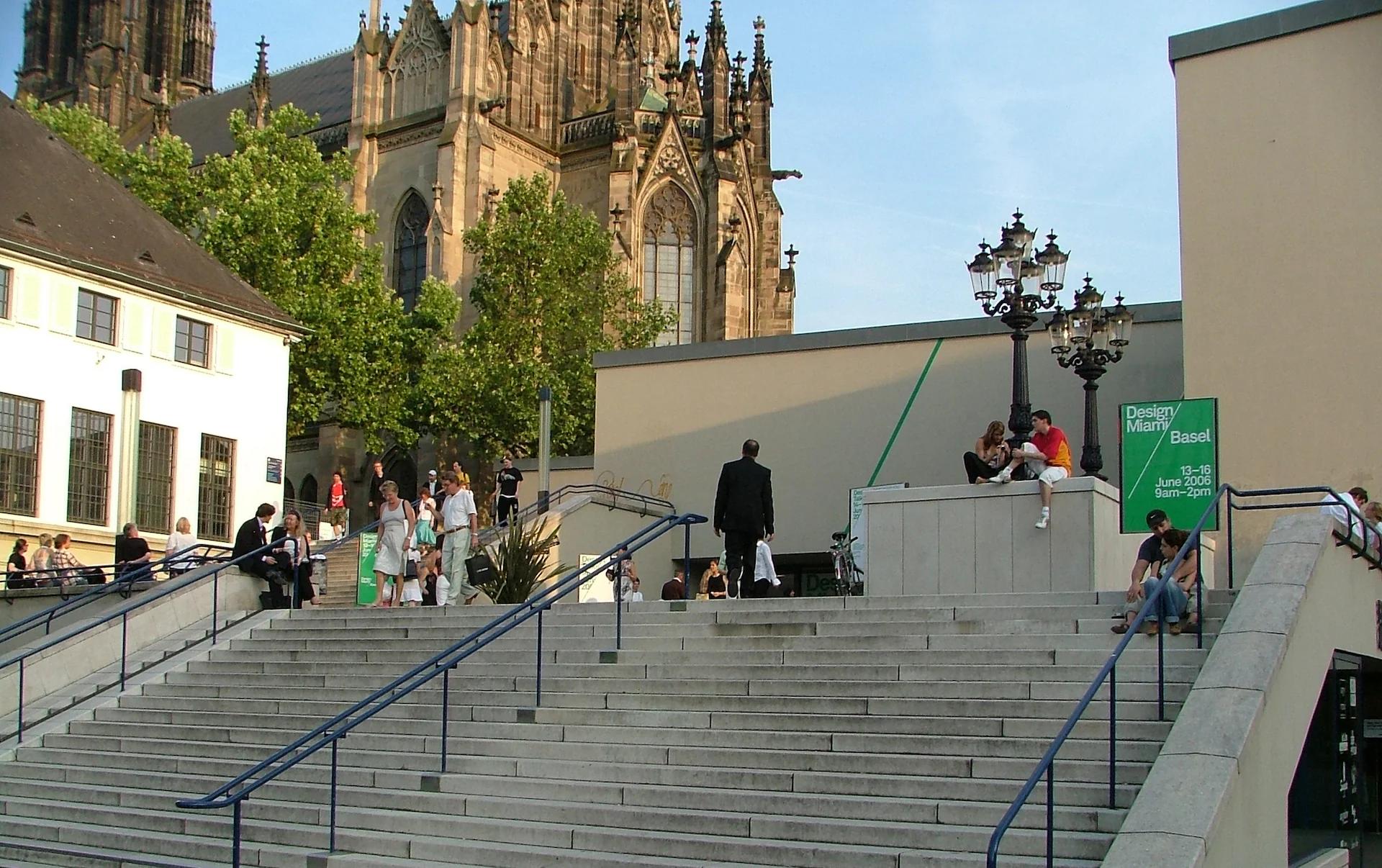
ENTRANCE TO THE FIRST DESIGN MIAMI/ BASEL IN 2006, PRESENTED ACROSS TWO VENUES, THEATER BASEL AND ELIZABETHAN CHURCH
Photo © Design Miami
DM/What is your favorite memory from a Design Miami/ fair?
JM/It would have to be the opening show in Basel in 2006, held that year in the Theater Basel and Elizabethan Church in the town center. Many of the same exhibitors still participate in the fair, but 2006 represented a bold step towards the future. It had a palpable sense of discovery and energy that marked the transformation of design from a segment of the market to the driving force it is today. ◆
Be sure to follow Morrison’s IG account to enjoy documentation of his ongoing design encounters, travels, and research.
Images courtesy of @MorrisonModern
